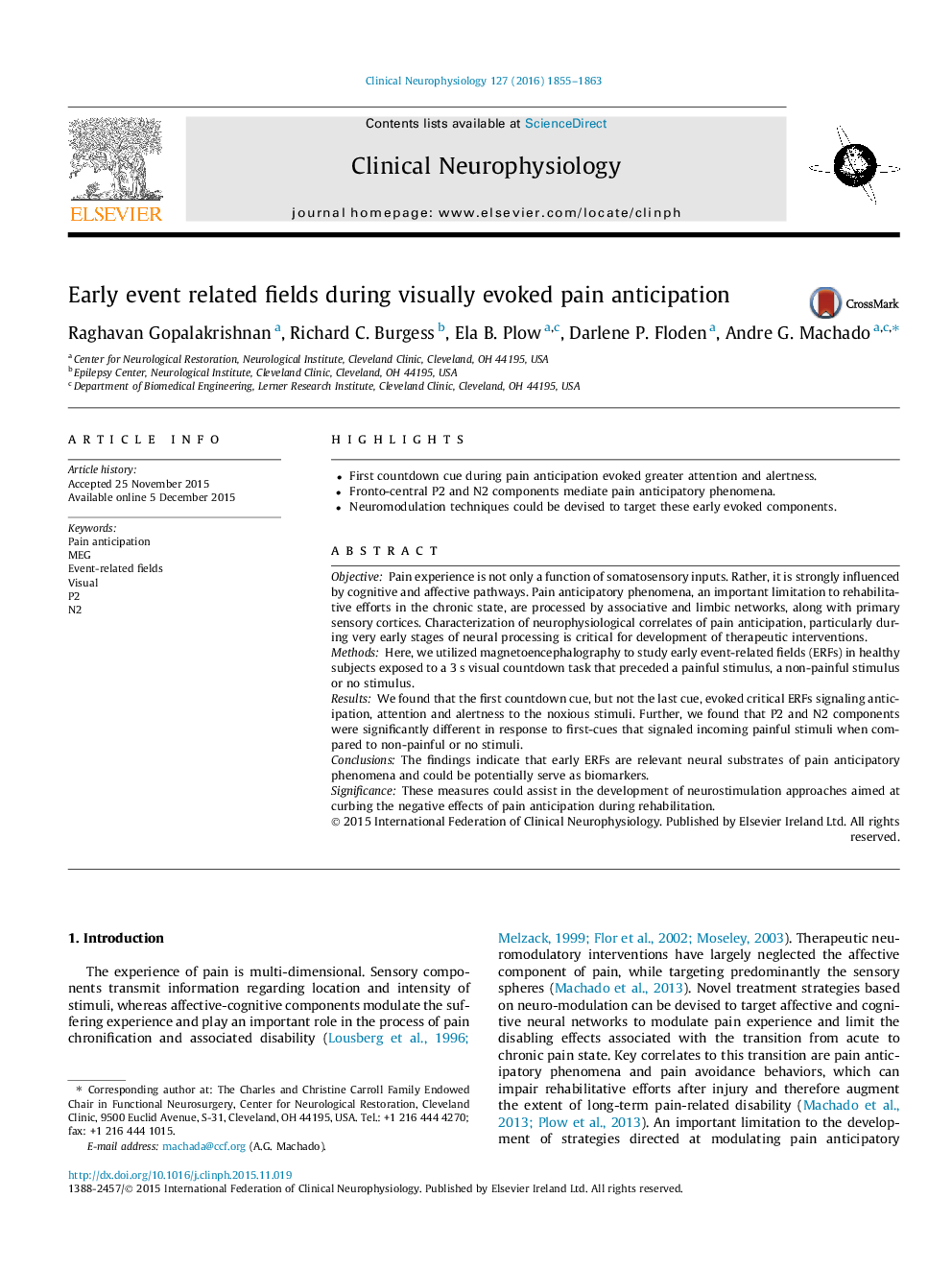| Article ID | Journal | Published Year | Pages | File Type |
|---|---|---|---|---|
| 3042898 | Clinical Neurophysiology | 2016 | 9 Pages |
•First countdown cue during pain anticipation evoked greater attention and alertness.•Fronto-central P2 and N2 components mediate pain anticipatory phenomena.•Neuromodulation techniques could be devised to target these early evoked components.
ObjectivePain experience is not only a function of somatosensory inputs. Rather, it is strongly influenced by cognitive and affective pathways. Pain anticipatory phenomena, an important limitation to rehabilitative efforts in the chronic state, are processed by associative and limbic networks, along with primary sensory cortices. Characterization of neurophysiological correlates of pain anticipation, particularly during very early stages of neural processing is critical for development of therapeutic interventions.MethodsHere, we utilized magnetoencephalography to study early event-related fields (ERFs) in healthy subjects exposed to a 3 s visual countdown task that preceded a painful stimulus, a non-painful stimulus or no stimulus.ResultsWe found that the first countdown cue, but not the last cue, evoked critical ERFs signaling anticipation, attention and alertness to the noxious stimuli. Further, we found that P2 and N2 components were significantly different in response to first-cues that signaled incoming painful stimuli when compared to non-painful or no stimuli.ConclusionsThe findings indicate that early ERFs are relevant neural substrates of pain anticipatory phenomena and could be potentially serve as biomarkers.SignificanceThese measures could assist in the development of neurostimulation approaches aimed at curbing the negative effects of pain anticipation during rehabilitation.
